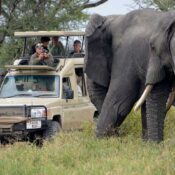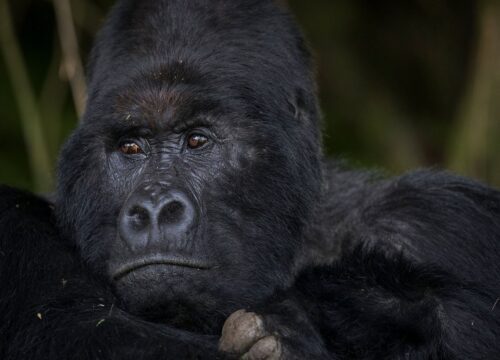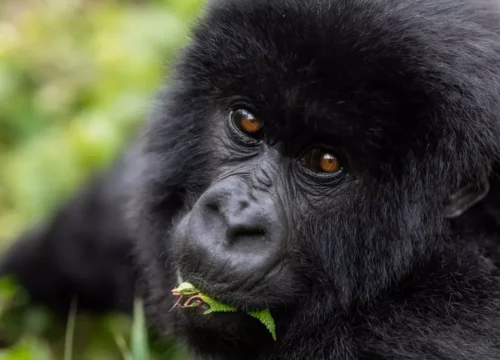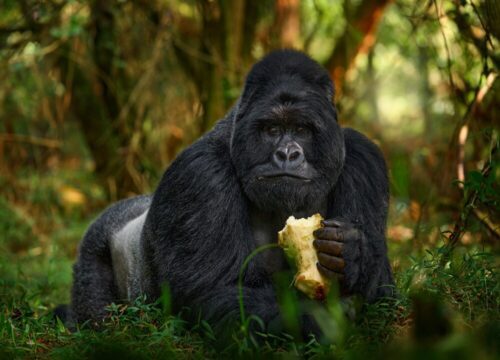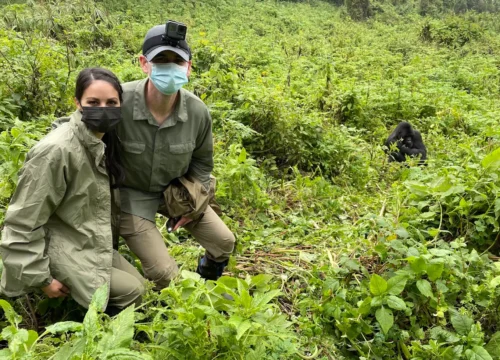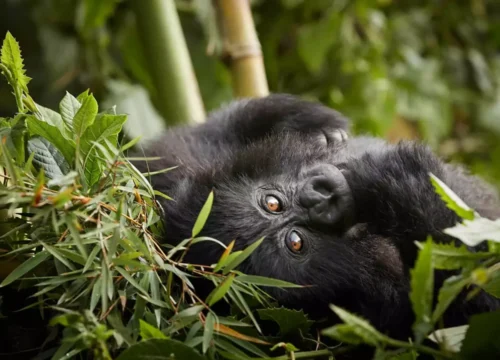Free 2025–2026 Gorilla Trekking Packing Checklist (PDF)

What to Pack for Gorilla Trekking in Uganda, Rwanda, and DR Congo
Why You Need the Gorilla Trekking Packing Checklist in 2025 and 2026

Planning to go gorilla trekking in 2025 or 2026? Whether you’re hiking through the misty jungles of Bwindi Impenetrable National Park in Uganda, scaling the slopes of Rwanda’s Volcanoes National Park, or venturing into the forests of Congo’s Virunga, one thing is certain: what you pack can make or break your gorilla trekking experience.
This isn’t your average hike. Gorilla trekking in Africa is done in high-altitude rainforests where weather can shift in minutes — from blazing sun to tropical downpour. Trails can be steep, muddy, and filled with stinging plants or slippery vines. That’s why having a smart, practical, and safari-tested gorilla trekking packing checklist is absolutely essential.
To help you prepare like a pro, we’ve created this Free Gorilla Trekking Packing Checklist for 2025 and 2026, available as a downloadable PDF. This guide outlines everything you need to carry — and what you should absolutely leave behind — to ensure comfort, safety, and full enjoyment of your once-in-a-lifetime gorilla trekking safari.
In this blog, you’ll find:
- A detailed gorilla trekking gear list organized by category (clothing, gear, documents, etc.)
- Specific recommendations for Uganda, Rwanda, and Congo trekking conditions
- Bonus tips on what not to pack and why certain items matter more than others
- A downloadable, printable PDF version of the 2025–2026 checklist to take with you
Whether you’re traveling solo, as a couple, or part of a group safari, this packing guide for gorilla trekking will help you stay prepared and confident from Day 1 of your journey.
Understanding the Gorilla Trekking Environment in Uganda, Rwanda & Congo
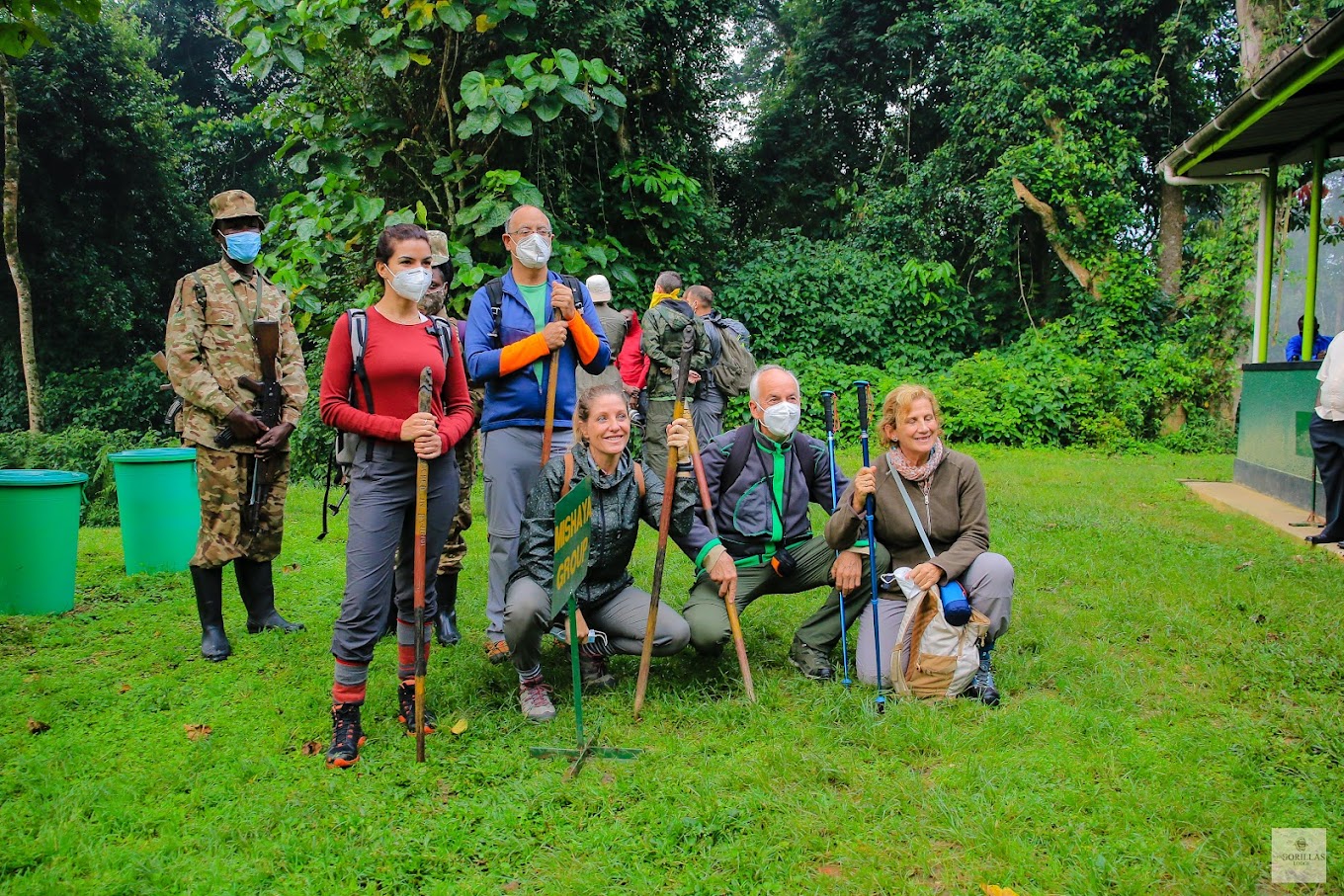
Before diving into your 2025–2026 gorilla trekking packing checklist, it’s important to understand the unique trekking environment that awaits you in East and Central Africa. This isn’t a typical trail walk — gorilla trekking takes you deep into rainforest terrain, often in remote, high-altitude zones, where the climate, vegetation, and conditions can change rapidly.
1. Climate & Altitude
Gorilla trekking in Uganda, Rwanda, and Congo happens at elevations ranging between 1,500 to over 2,600 meters (4,900–8,500 feet). This means:
- Cooler temperatures, especially in the mornings and evenings
- High humidity and regular rainfall, even during the so-called dry seasons
- Muddy, steep, and slippery trails are common — regardless of the month
Even during dry seasons (December–February and June–August), short downpours are frequent. You’ll need to pack for comfort, mobility, and waterproofing, not just for wildlife viewing.
2. Terrain & Vegetation
Bwindi Impenetrable National Park, Volcanoes National Park, and Virunga are known for:
- Dense jungle and thick undergrowth
- Uneven terrain with inclines and ridges
- Trails that are often unmarked and led by machete-wielding rangers
Your hike could last anywhere from 30 minutes to 6 hours one way, depending on gorilla movements. That’s why your footwear, socks, gloves, and pants are more critical than you might expect.
3. Wildlife & Safety Considerations
The rainforests are home not just to mountain gorillas, but also:
- Insects like tsetse flies and safari ants
- Poisonous or stinging plants
- Other primates and forest mammals
That’s why long sleeves, gloves, insect repellent, and neutral-colored clothing are key. They protect your skin, blend with the environment, and respect gorilla behavior.
The Ultimate Gorilla Trekking Packing Checklist for 2025–2026
Everything You Need to Bring for a Safe, Comfortable, and Successful Safari
To make your gorilla trekking experience smooth and stress-free, we’ve broken down your packing list into categories. This ensures you don’t miss a thing — whether you’re trekking in Uganda, Rwanda, or Congo.

A. Essential Travel Documents
Never start your safari without these key documents. You’ll need them at airport immigration, park gates, and ranger briefing points.
| Item | Why It’s Important |
|---|---|
| Passport | Must be valid for at least 6 months beyond your travel date |
| Visa (eVisa or on arrival) | Required for Uganda, Rwanda, or DR Congo |
| Gorilla Trekking Permit | This is mandatory. No one treks without it. Must be booked in advance |
| Yellow Fever Certificate | Required for entry into most East African countries |
| Travel Insurance Documents | Include medical evacuation coverage for high-risk terrain activities |
| Flight Itineraries | Both digital and hard copy versions recommended |
| Safari Booking Confirmation | Especially useful when checking into lodges or with park staff |
| Covid-19 Documentation | Not always required, but check current entry rules for your destination |
B. Clothing & Footwear Essentials for Gorilla Trekking
Your clothing must serve three key purposes: protection, comfort, and functionality. You’ll be hiking through thick rainforest, possibly in the rain, heat, or mud — and you want to be covered yet mobile.
Recommended Clothing (Layered for All-Day Trekking)
| Item | Why You Need It |
|---|---|
| Long-sleeved moisture-wicking shirts | Protects from scratches, insects, and sunburn while keeping you dry |
| Convertible trekking pants (zip-off) | Lightweight, quick-dry, and flexible for shifting temperatures and terrain |
| Light fleece or warm layer | Morning treks are chilly, especially at higher altitudes |
| Lightweight waterproof jacket or poncho | Essential even in dry season due to unpredictable forest rain |
| Neutral-colored T-shirts (not white) | Helps blend into the environment — avoid bright colors or camouflage patterns |
| Sports bra (for women) | A must for bumpy and uneven trails |
| Warm hat/beanie | For chilly mornings in high-altitude areas |
| Sun hat or wide-brim safari hat | Offers sun protection and keeps bugs off your face |
Trekking Footwear
| Item | Why You Need It |
|---|---|
| Sturdy waterproof hiking boots (ankle-high) | Provides ankle support and grip on steep, muddy trails |
| Gaiters (optional but useful) | Protects your legs and socks from mud, ants, and water |
| Comfortable camp shoes/slippers | For relaxing at the lodge after your trek |
| Moisture-wicking socks (3–4 pairs) | Reduces the risk of blisters and fungal infections in humid conditions |
Pro Tip: Break in your hiking boots at least 2–3 weeks before your trip to avoid blisters during the trek.
D. Health, Safety & Personal Care Essentials
Gorilla trekking takes place in remote areas where health services are minimal. You’ll need to be self-sufficient when it comes to personal hygiene, protection, and basic medical needs.
Health & Hygiene
| Item | Why You Need It |
|---|---|
| Insect repellent with DEET | Protects against mosquitoes and tsetse flies (especially in the evenings) |
| Hand sanitizer or sanitizing wipes | Hygiene on the trail and in remote lodges |
| Personal medications | Bring enough for your trip – local pharmacies may not have your prescriptions |
| First aid kit (compact) | Include plasters, antiseptic cream, antihistamines, painkillers, and rehydration salts |
| Sunscreen (high SPF) | Even in cloudy forest cover, UV rays can be intense |
| Lip balm with SPF | Prevents dry and sunburnt lips at higher altitudes |
| Toiletries (biodegradable if possible) | Toothbrush, toothpaste, small towel, deodorant, etc. |
| Toilet paper or pocket tissue | Not always available during hikes or at rural rest stops |
| Rehydration tablets (e.g., Dioralyte) | Useful after long, hot hikes in humid conditions |
Optional But Useful:
- Motion sickness tablets (for bumpy roads)
- Eye drops (for dust and dry eyes)
- Blister patches (especially if new boots are worn)
E. Tech, Photography & Communication Gear
Gorilla trekking offers once-in-a-lifetime moments you’ll want to capture — but the rainforest presents challenges like humidity, low light, and limited charging options. Be prepared with the right tools.
| Item | Why You Need It |
|---|---|
| Camera (DSLR, mirrorless, or high-end smartphone) | To capture gorillas and forest landscapes in detail |
| Zoom lens (70–200mm or higher) | Keeps a safe distance while capturing close-up shots |
| Camera rain cover or dry bag | Essential for protecting gear from rain and humidity |
| Extra SD cards & batteries | Electricity at lodges may be limited or solar-based |
| Power bank (10,000–20,000 mAh) | Keeps your phone or camera charged on the go |
| Flashlight or headlamp | Useful in lodges with limited lighting or during power outages |
| Travel adapter (UK or EU type, 220–240V) | Uganda, Rwanda, and Congo use different plug types |
| Phone with offline maps & translator | Useful in rural areas with no data coverage |
| Binoculars (optional but ideal) | For birdwatching and wildlife spotting during your game drives |
Pro Tip: Avoid using camera flash near gorillas — it’s prohibited and may startle the primates.
F. Optional Comfort Items & Travel Accessories
While not essential, these comfort-focused packing items can elevate your gorilla trekking experience — especially if you’re traveling for more than just the trek or spending extended time in Uganda, Rwanda, or Congo.
| Item | Why You May Want It |
|---|---|
| Binoculars | For viewing birds, monkeys, or distant gorillas not easily visible to the naked eye |
| Notebook & pen | For journaling or documenting wildlife observations |
| Travel pillow | Makes long road trips more comfortable |
| Reusable shopping bag or dry sack | Great for organizing gear or protecting electronics from rain |
| Cash in small denominations (USD or local currency) | For tipping, markets, and places that don’t accept cards |
| Earplugs | If you’re staying in budget accommodations or near noisy forest areas |
| Laundry line or quick-dry towel | For drying clothes if staying at eco lodges without full laundry service |
| Favorite snacks or energy bars | Trekking can take hours — energy boosts help |
| Book or Kindle | For relaxing in the evenings at the lodge |
Tip for Travelers with Back Issues: A small, lightweight travel seat cushion may come in handy for bumpy rides or resting on forest trails.
G. What NOT to Pack for Gorilla Trekking in 2025–2026
While it’s tempting to over-prepare, bringing the wrong items can slow you down, raise red flags at immigration, or make your trek uncomfortable. Here’s what you should leave behind — and why.
| Item | Why You Shouldn’t Pack It |
|---|---|
| Bright-colored clothing | Gorillas are wild animals; bright colors can attract unwanted attention or confuse them |
| Camouflage print | In Uganda, Rwanda, and Congo, camouflage is restricted to military use |
| Drones (without permits) | Drone use is banned or highly restricted in national parks — and can scare gorillas |
| Heavy suitcases or hard-shell bags | Difficult to carry on muddy treks or load in safari vehicles |
| Perfumes or scented lotions | Strong smells can disturb gorillas and attract insects |
| Jewelry or valuables | Risky to carry into the jungle and unnecessary for trekking |
| Flip-flops or open-toe shoes | Dangerous and impractical for forest hiking |
| Hair dryers or high-voltage appliances | Most eco-lodges use solar power and can’t support heavy electronics |
| Speakers or loud devices | Sound pollution disrupts wildlife and fellow trekkers |
Important: Follow the ranger’s briefing closely. Some items may also be confiscated at park entry if deemed unsafe or disruptive.
Download Your Free 2025–2026 Gorilla Trekking Packing Checklist (PDF)
Now that you know exactly what to pack — and what to leave behind — it’s time to make your trip planning even easier.
We’ve created a beautifully formatted, printable Gorilla Trekking Packing Checklist PDF that’s 100% free and tailored specifically for trips to Uganda, Rwanda, and Congo in 2025 and 2026.
Whether you’re a solo traveler, couple, or group planning your gorilla trekking safari, this downloadable guide ensures you’re fully prepared for everything the jungle may throw at you.
Here’s what you’ll get in the PDF:
- Full categorized checklist with tick boxes
- Pro tips from local guides
- Space for custom notes
- Bonus safety tips for your trek
- Mobile-friendly and printable format
Ready to pack like a pro?
[Download Your Free Gorilla Trekking Packing Checklist (PDF)]
Need help planning your full gorilla safari?
Nextgen Safaris Africa is here to guide you from first flight to final farewell. We organize expert-led safaris in Bwindi, Volcanoes, and Virunga, combining gorilla trekking with unforgettable cultural and wildlife experiences.
[Contact Us Now] to build your 2025–2026 gorilla trekking itinerary.
Recent Posts
Last Minute Deals
Quick booking process
+49 1575 4711313



